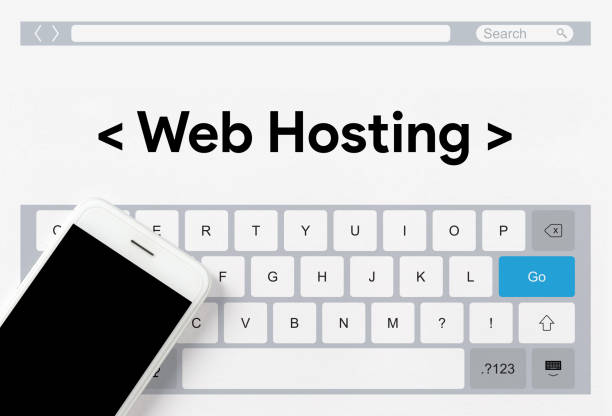
Cyber attacks evolve every day in this modern world. It is important to secure your web hosting environment. It can be a personal blog or a business-critical application. One mistake can lead to data breaches, reputation loss, and loss of money. That’s why understanding and implementing solid web hosting security layers is required.
Let’s get into it!
1. Select a Secure Hosting Provider
Your hosting provider is a foundational element in security. First and foremost, make sure your provider provides:
- Regular server patching and updates
- DDoS protection
- Secure data centers with physical access controls
- 24/7 monitoring and support
- Daily or weekly automated backups
- Malware scanning and removal tools
Choose a provider with an excellent reputation for security and industry standard compliance, like ISO/IEC 27001 or SOC 2.
2. Leverage Strong Authentication Mechanisms
Passwords are insufficient. Add robustness to access with:
- Two-Factor Authentication (2FA): Provides a second level of login protection with OTPs or authentication apps.
- Strong, Fresh Passwords: Don’t use default credentials and change passwords regularly.
- Role-Based Access Control (RBAC): Restrict admin access to just those who need it.
Most control panels and CMS platforms now offer built-in support for 2FA—enable it immediately.
3. Keep Software and Plugins Updated
Outdated CMS platforms, plugins, and themes are one of the most common attack vectors. Hackers scan the internet for known vulnerabilities.
- Enable automatic updates wherever possible
- Remove unused plugins and themes to reduce potential entry points
- Subscribe to security mailing lists for your software stack (e.g., WordPress, Joomla, or Magento)
- Regular updates are easy but very effective at minimizing risk.
4. Implement a Web Application Firewall (WAF)
A WAF guards your site by blocking malicious traffic before it hits your server. It shields against:
- Cross-Site Scripting (XSS)
- SQL Injection
- Cross-Site Request Forgery (CSRF)
- File inclusion attacks
Cloud-based WAFs such as Cloudflare, Sucuri, and AWS WAF can be implemented without installing anything on your server and provide global CDN services as a bonus.
5. Allow HTTPS and Force SSL
HTTPS is no longer a nicety. It encrypts communication between the browser and server, which secures login credentials, user data, and payment details.
- Install SSL certificates (Let’s Encrypt provides free ones)
- Redirect all HTTP traffic to HTTPS
- Enforce secure connections using HSTS headers
- Most browsers now flag non-HTTPS sites as “Not Secure,” which harms user trust and SEO rankings.
6. Harden File and Directory Permissions
- Incorrect file permissions can reveal sensitive configurations or enable attackers to upload malicious scripts.
- Use 644 for files and 755 for directories (in most Linux environments)
- Lock down configuration files such as wp-config.php or .env
- Disable directory listing with .htaccess or server settings
- Deny public access to core folders such as /etc/, /bin/, or /lib/
- A misconfigured permission setting is usually all it takes to open the door to hackers.
7. Isolate Hosting Environments
Hosting multiple websites on a shared server? It only takes one vulnerable site to bring down the whole server.
- Use containerization (Docker) or virtual machines for compartmentalization
- Create isolated user accounts and file systems
- Minimize shared database usage unless necessary
Implementing this style is particularly pertinent to developers, resellers, or agencies controlling client sites.
8. Harden the Control Panel and Admin Sections
Your web hosting control panel needs to be a backdoor, not a front door. Most attacks focus on open admin panels.
- Modify default URLs and admin ports
- Restrict control panel access by IP address
- Implement idle session automatic logouts
- Track login attempts and block brute-force attacks
This holds true for both CMS admin panels (such as /wp-admin) and server panels (such as cPanel, CyberPanel, or Plesk).
9. Enable Real-Time Monitoring and Alerts
You can’t repair what you can’t see. Real-time monitoring software provides visibility into anomalous activity and allows you to respond promptly.
- Utilize software such as OSSEC, Tripwire, or Fail2Ban to log watch and block bad IPs
- Implement email or SMS notifications for login attempts, changes to configuration, or unusual file changes
- Monitor uptime and response time to pick up on initial indications of attack or downtime
Log retention and periodic audits assist with post-incident analysis and continuous improvement.
10. Backup and Restore Frequently
- Backups are your lifeline—but only if they are functional.
- Implement automated daily or weekly website, database, and server config backups
- Keep backups offsite (in cloud storage or external hard drives)
- Test restoration periodically to validate that your recovery plan is solid
- Ransomware and accidental file deletion can be rendered useless if good backups exist.
11. Disable Unused Services and Ports
An open port is an open invitation. Minimize your attack surface by disabling everything you do not use.
- Close unused ports with a firewall such as UFW or CSF
- Remove unnecessary services (FTP, Telnet, etc.)
- Use SSH key authentication rather than passwords
- Disable root login through SSH and set up a different user with sudo access
- Minimalism is a security strategy—keep only what’s needed.
12. Educate and Train Your Team
- Human mistake ranks among the foremost reasons for breaches of security.
- Train employees about phishing, social engineering, and password hygiene
- Enforce content editor, developer, and admin security policies
- Make recertification or refresher a routine requirement
An otherwise technically healthy system is open to attack if your users become victims of a phishing scam.
Final Thoughts
Securing a hosting environment involves a layered system—there isn’t one magic bullet solution. From the physical server to your CMS login, every layer must be hardened and watched.
By implying proactive security measures like updates and firewalls on top of reactive ones like monitoring and backups, you’ll reduce the risk of compromise.
Implementing these measures into your hosting routine will make your environment strong, secure, and stable for your users.